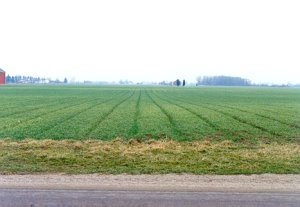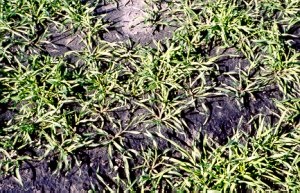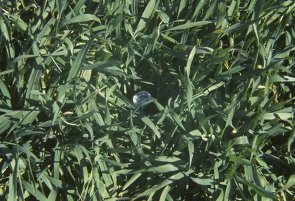Cover crops: rye
Information on the benefits and growth habits of rye planted as a cover crop.
Description
Family
- Grass
Growth habits
Germination and emergence
- Will germinate in cold temperatures –1 to 2°C but vegetative growth requires 4°C.
Top growth
- Taller than wheat, mature crop 120 to 150 cm in height; Warm wet weather in spring can cause rapid growth from 15 cm to 1 m in a short period of time.
- Long day plant — will flower when daylight hours exceed 14 hours and temperatures average 5 to 10°C.
- When flowering starts — vegetative growth stops.
Root system
- Fibrous.
- Extensive — can cover 1 m radius and 2 m depth of soil.
Overwintering
- Does not winter kill.
- As living tissue, there is greater resistant to sand abrasion over winter.
- Resumes growth in spring faster than wheat.
Site suitability
- More drought tolerant than wheat or oats.
- Tolerates a wide range of soil conditions but does best in well drained light soils — sands, loamy sands, sandy loams and gravelly soils.
Control options
- Can be harder to kill than other cereals — timing and control options are critical.
- Mow when crop goes into flowering stage (vegetative growth has stopped) for non-chemical control.
- Requires careful management of chemical control in the spring.
- Low rates of glyphosate can kill the plant — but leave it standing. This prolongs protective features longer. High rates of glyphosate will knock the crop down leaving less wind protection.
Sensitivity to herbicides: weed control
- There are many herbicides registered for use in wheat but good weed control for a cover crop should not be expensive and may not be needed. Establish a vigorous crop canopy to smother out weeds.
Benefits and concerns
Nutrient management
- Best cool season cereal crop for taking up leftover nitrogen from previous manure application(s).
- Can tie up nitrogen in spring when needed by following crop.
- Rye may help to increase the concentration of potassium at the surface due to its extensive root system.
Pest management
- Competitive growth habits — good for suppressing weeds.
- Allelopathic effect — prevents weed germination and growth, but can have allelopathic effect on other grass-like crops (e.g. corn).
Organic matter
- Large volumes of plant biomass returned to soil.
Erosion control
- Wind abatement strips.
- On tomato beds.
- As strips in tobacco or vegetable fields.
- Preferred because it does not winterkill and is resilient to sand blasting.
Soil moisture
- More drought tolerant than wheat or oats.
Getting started
Establishment
- Shade tolerant — can be overseeded into a standing crop of corn before leaf drop.
- Only cover crop that can be planted in the late fall and still provide some soil cover, although the protection may not be highly effective until early spring.
- Cold tolerant — established rye can withstand temperatures of – 35° C.
Cost and availability
- Seed is relatively inexpensive and readily available.
Updated: May 15, 2024
Published: August 24, 2022


